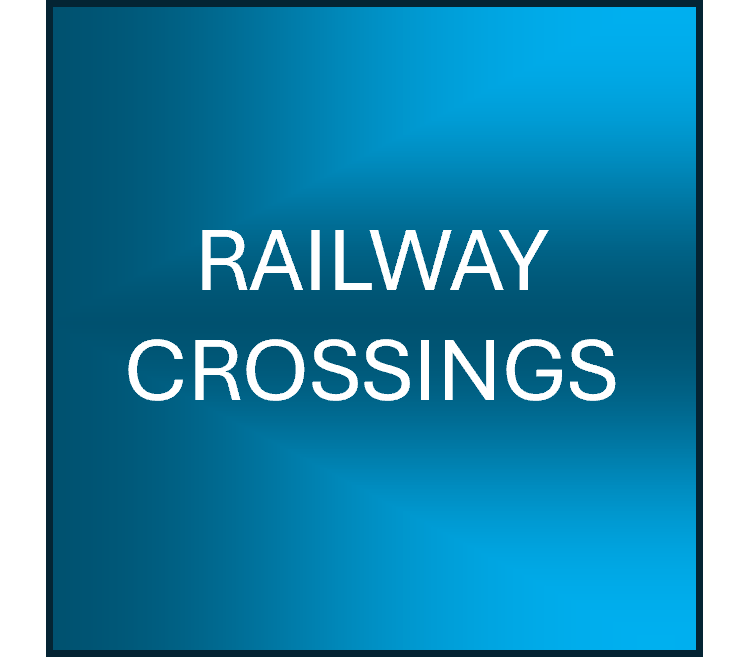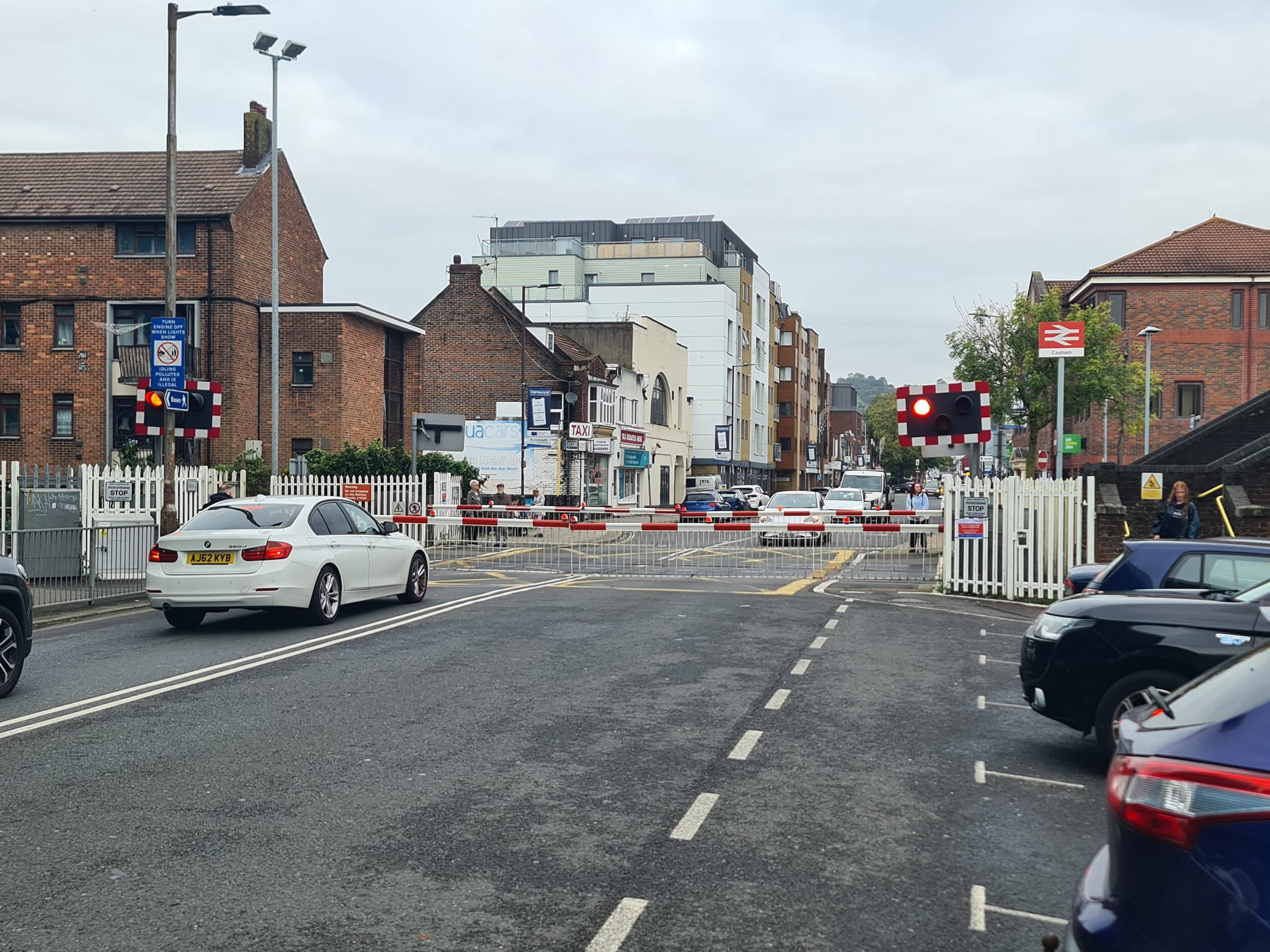
Or crossings with WIG WAG Lights

Or crossings with WIG WAG Lights

But can also be seen at Fire and Ambulance stations.
To be treated in the same manner as traffic lights.

There are many different types of Railway crossing, some with barriers some without, some with gates that are manually closed. Some that will cross just one pair of tracks and others that will cross multiple tracks.
The biggest thing to remember AT ALL OF THEM, your car is tiny, and trains are HUGE!
Trains weigh hundreds of tonnes and won’t even notice you if they hit you!
* When lights illuminate, prepare to stop. A solid amber light will illuminate first, followed by flashing red lights from side to side.
* Use the Hazard routine on approach.
* Consider the Orange light as red (unless unsafe to do so) but NEVER enter the crossing once lights have turned red.
* If the crossing only has half barriers (just on your side of the road) NEVER attempt to ZIG ZAG around them, stay on your side of the road and wait for the train to clear, barrier to rise and lights to go out before proceeding.
* Once stopped at a crossing it is a legal requirement to switch off your engine (idling law). This will not only save you wasting fuel but is good for your engine (wear and tear) the residents in built up areas (noise pollution/ air pollution) as well as being great for the environment generally.
* At crossings with gates but no lights or attendant, look for signs giving instructions about what you should do. You will need to be sure that the line/s are clear before opening the gates to cross.
* At crossings without gates or barriers look for lights or signs, if lights are flashing, stop, and wait until lights go out even if the crossing looks clear.
Breaking down on a crossing.
* Get your passengers out if you have any and get them clear of the crossing. It doesn’t matter if the lights are not flashing, by being prepared early it will save precious time that you might not have if a train does come.
* If there is a telephone at the side of the crossing, use it, it will connect you to the signal person. Explain your situation, they will then alert approaching trains by changing signals along the line to red to stop them.
If there is time to attempt to move your car, you could put the car into neutral and try just pushing it off the crossing, alternatively if you have an ignition key style ignition, place the car into 2nd or 3rd gear, release the handbrake and turn over the engine with the clutch up. This will cause the car to “jerk” itself forward. Keep doing this until the car is clear of the crossing, you can then re-contact the signal person to let them know you are clear.
BUT NEVER PUT YOURSELF OR OTHERS AT RISK IN THE PROCESS
There will be occasions, especially on non barriered crossing where a train will pass but the lights remain on.
DO NOT DRIVE ON UNTIL THE LIGHTS HAVE GONE OUT. IT MEANS ANOTHER TRAIN IS COMING!
Obviously on occasion the lights may have malfunctioned, if you feel this may be the case, use the phone alongside the crossing to speak with the signal person to find out if this is the case.
Where WIG WAG lights are present at a fire or Ambulance station, there will be no barriers but a stop line the same as that at a set of traffic lights. There will also usually be a box junction. Ensure you stop at the stop line and wait for the lights to go out before proceeding. The box junction is there to keep the area clear for vehicles emerging from the stations, so ensure you plan ahead to ensure you don't end up stopping in one.